Technology
Wearable Smart Devices Enhancing Health Tracking in 2025
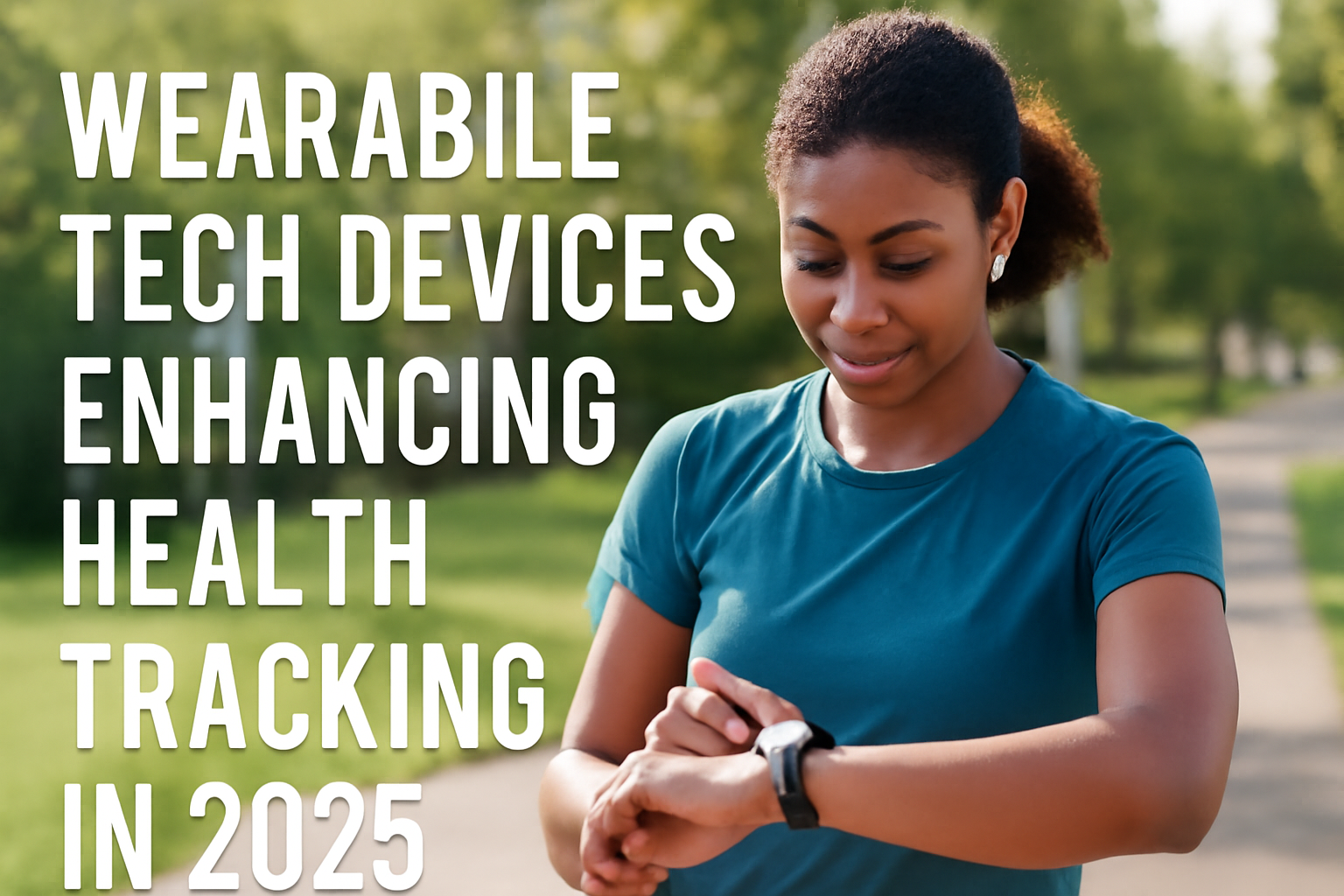
Introduction
In 2025, wearable tech is transforming the way we track and improve our health. These devices, such as smartwatches, fitness trackers, and health-monitoring gadgets, are now more advanced than ever before, offering a wide range of features that help individuals monitor everything from physical activity to heart health and sleep patterns.
With the rise of Wearable Technology, health tracking is no longer limited to just fitness goals. These devices provide deeper insights into various aspects of our well-being, helping users make informed decisions about their lifestyle and health. Whether you’re looking to improve your fitness, manage a chronic condition, or simply stay healthy, wearable tech can make the process easier and more efficient.
In this article, we’ll dive into how wearable tech is enhancing health tracking in 2025, explore some of the top devices available, and discuss how they can help you improve your overall well-being.
What is Wearable Tech?
Wearable tech refers to electronic devices that you wear on your body and are designed to track various health metrics. These devices are equipped with sensors and software that collect data on everything from steps and calories burned to heart rate, sleep quality, and stress levels. The data is then processed and displayed, often through an app, making it easier for users to monitor their health and fitness progress.
Some of the most popular wearable tech devices include smartwatches, fitness trackers, and health-monitoring gadgets. These devices can sync with your smartphone or computer to provide real-time updates, personalized insights, and recommendations for improving your lifestyle.
Top Wearable Tech Devices for Health Tracking in 2025
In 2025, the world of wearable tech has evolved to offer even more sophisticated and accurate tools for health tracking. Here are some of the most popular and effective devices you can use to monitor your health:
1. Smartwatches with Health Tracking Features

Image by: Yandex.com
Smartwatches have become one of the most popular wearable tech devices for health tracking in recent years. These devices are no longer just for checking the time or receiving notifications—they now come with built-in sensors and features that monitor your heart rate, sleep, activity levels, and even blood oxygen levels.
Why they’re essential: Smartwatches are ideal for tracking various aspects of your health throughout the day. They can provide real-time feedback on your heart rate during exercise, monitor your sleep patterns to help you get better rest, and even alert you to potential health issues, such as an irregular heartbeat.
Top Picks for 2025:
- Apple Watch Series 8: A leader in health tracking with features like ECG monitoring, blood oxygen measurement, and enhanced sleep tracking.
- Samsung Galaxy Watch 5: Offers advanced health tracking features, including body composition measurement and stress level monitoring.
Tip: To get the most out of your smartwatch, sync it with a health app to track long-term trends and get personalized insights.
2. Fitness Trackers for Activity Monitoring

Image by: Yandex.com
Fitness trackers are simple yet powerful wearable tech devices designed specifically for tracking physical activity. These gadgets are lightweight and unobtrusive, making them ideal for individuals who want to monitor their steps, calories burned, and exercise routines without the bulk of a smartwatch.
Why they’re important: Fitness trackers are perfect for setting and achieving fitness goals, whether it’s walking 10,000 steps a day or reaching your target calories burned. They can also provide detailed analysis of your activity levels, helping you stay on track and improve your fitness over time.
Top Picks for 2025:
- Fitbit Charge 5: Offers built-in GPS, heart rate monitoring, and advanced sleep tracking features.
- Garmin Vivosmart 5: A compact fitness tracker with all-day heart rate monitoring and stress tracking features.
Tip: Use the data from your fitness tracker to set realistic fitness goals and track your progress over time. Many trackers also provide motivation through challenges and rewards.
3. Sleep Trackers for Better Rest

Image by: Yandex.com
Sleep is one of the most critical factors in maintaining overall health, yet many people struggle to get enough restful sleep. Sleep trackers are wearable tech devices that monitor your sleep patterns, helping you understand the quality of your sleep and make adjustments to improve it.
Why they’re valuable: Sleep trackers measure various aspects of your sleep, such as how long you sleep, how often you wake up during the night, and the stages of sleep you experience (light, deep, REM). This information is crucial for identifying issues like sleep apnea or poor sleep quality and making changes to your lifestyle or sleep environment to improve rest.
Top Picks for 2025:
- Oura Ring: A sleek, ring-shaped sleep tracker that measures sleep stages, heart rate, and body temperature.
- Whoop Strap 4.0: A fitness tracker with advanced sleep and recovery tracking features, designed for athletes and fitness enthusiasts.
Tip: To improve your sleep quality, focus on maintaining a regular bedtime, limiting screen time before bed, and using a sleep tracker to identify patterns and make improvements.
4. Health-Monitoring Wearables for Chronic Conditions
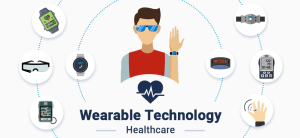
Image by: Yandex.com
In addition to tracking physical activity, some wearable tech devices are designed to monitor specific health conditions, such as diabetes, blood pressure, or asthma. These devices are incredibly useful for individuals with chronic conditions who need continuous monitoring to manage their health.
Why they’re essential: Wearables for chronic conditions provide real-time data that can help you stay on top of your health. For example, a glucose monitor can track your blood sugar levels throughout the day, while a blood pressure monitor can alert you to changes in your readings. This allows for quicker intervention if any issues arise.
Top Picks for 2025:
- Dexcom G6 Continuous Glucose Monitor: Provides real-time glucose readings for individuals with diabetes, helping them better manage their condition.
- Omron HeartGuide: A wearable blood pressure monitor designed to keep track of your heart health throughout the day.
Tip: For individuals with chronic conditions, integrating wearable health monitors with your healthcare provider’s system can help you share data and receive timely advice.
5. Stress and Wellness Trackers
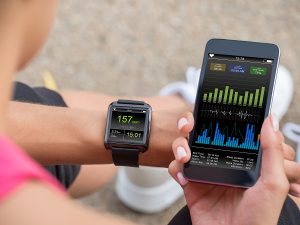
Image by: Yandex.com
Stress is a significant factor that affects many aspects of our health. Wearable stress trackers are designed to measure your stress levels, helping you understand how your body reacts to different situations and what you can do to manage it.
Why they’re important: These trackers monitor factors such as heart rate variability (HRV) and skin temperature to determine your stress levels. By identifying when your stress is highest, you can take steps to manage it more effectively, such as practicing mindfulness, breathing exercises, or taking breaks throughout the day.
Top Picks for 2025:
- Spire Stone: A small device that clips to your clothing and monitors breathing patterns to measure stress and calmness.
- Pip Stress Monitor: A handheld device that measures your stress levels by monitoring your skin response, providing real-time feedback.
Tip: Use stress trackers as part of a broader wellness routine, incorporating activities like yoga, meditation, or mindfulness to lower your stress levels.
Conclusion
In 2025, wearable tech devices are more powerful than ever, offering Innovative Solutions for tracking your health and improving your overall well-being. Whether you want to monitor your physical activity, improve your sleep quality, manage a chronic condition, or reduce stress, there’s a wearable device for everyone.
By integrating these tools into your daily routine, you can gain valuable insights into your health and make informed decisions to improve your fitness, wellness, and quality of life. As wearable technology continues to evolve, expect even more groundbreaking devices to help you stay on top of your health in the years to come.
Technology
Exploring the Future of AI in Everyday Life in 2025
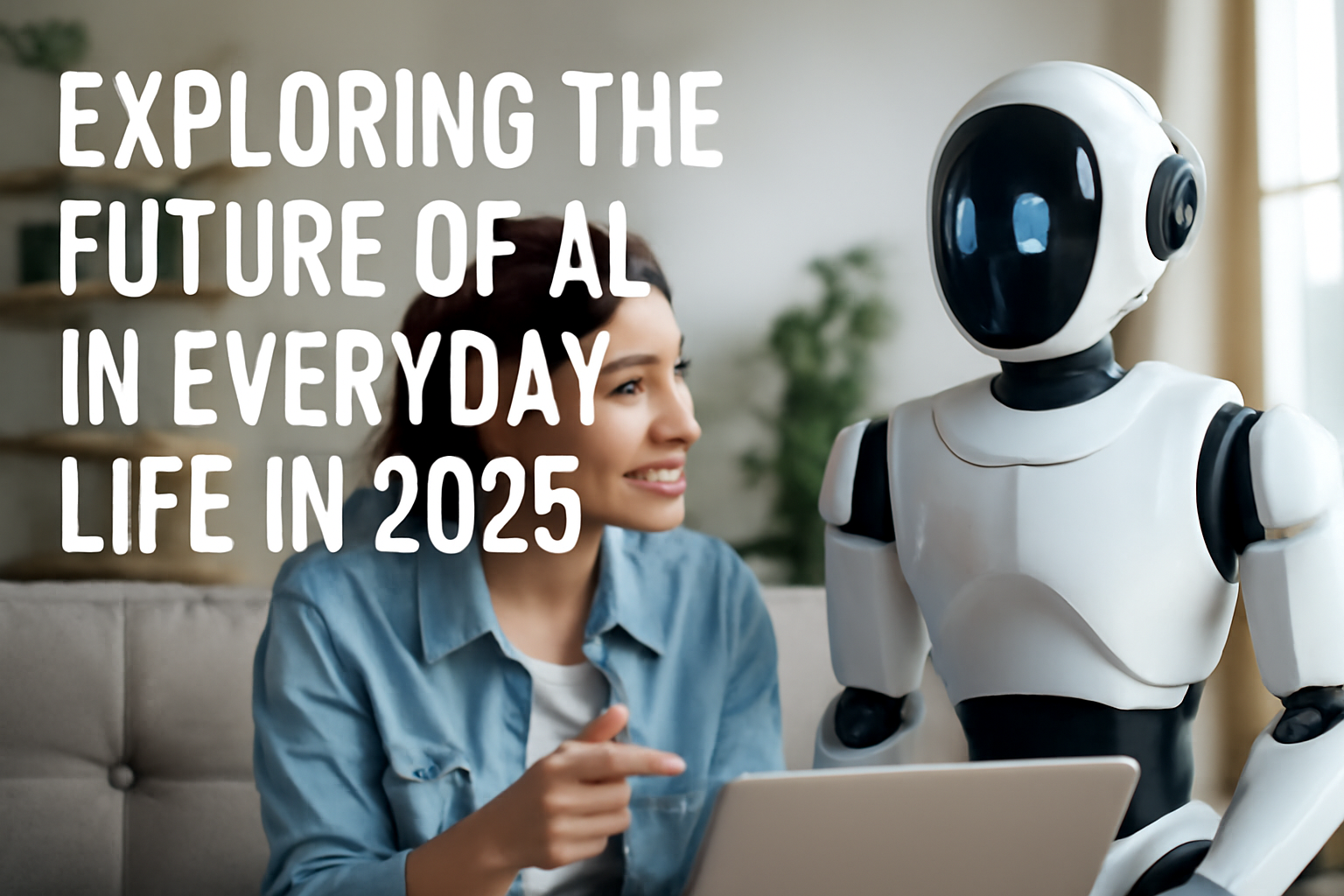
Introduction
Artificial Intelligence, or AI, is no longer just a part of science fiction. It is found in homes, workplaces, schools, and even our phones. The smart tools we use are powered by AI to make life easier, faster, and better.
From voice assistants to personalized health tracking, AI is Changing how we live. These tools help people stay organized, save time, and make better choices. Whether it’s suggesting your next song or helping doctors find problems early, AI in everyday life is more useful than ever.
This article explores how AI is shaping our daily lives in 2025. We will look at what AI is, how it works, and where it appears in your routine without you even realizing it.
Let’s explore the exciting and growing role of AI in our everyday lives—and how it’s quietly making the world smarter around us.
Artificial intelligence (AI) has come a long way in recent years, and its impact on our daily lives is only going to grow in the future. By 2025, AI will be even more integrated into various aspects of our lives, transforming everything from the way we work and learn to how we manage our health and personal tasks. But what exactly does the future of AI hold for us? In this article, we’ll explore the exciting advancements in AI technology, how they’ll affect everyday life, and the ways in which we can expect to see AI shaping our future.
What Is AI and Why Is It Important Today?
Artificial Intelligence is a type of computer program that can learn, think, and make decisions like humans. It uses data, patterns, and logic to solve problems and suggest actions. Unlike regular software, AI keeps learning over time. The more data it has, the better it gets.
In 2025, AI is everywhere. It powers voice assistants like Alexa, Siri, and Google Assistant. It runs chatbots on websites. It suggests what you might want to watch on Netflix or buy on Amazon. It even helps manage traffic, detect diseases, and create smart robots.
The reason AI is so important now is because it saves time and improves accuracy. It handles boring or repetitive tasks. It keeps systems running smoothly. It learns your preferences and offers custom suggestions. From homes to hospitals, from banks to classrooms, AI applications are making everyday activities easier and smarter.
AI also helps people stay safe. In health, it can find signs of illness early. In cars, it powers smart braking systems. In cities, it manages energy and security systems. By handling complex data quickly, AI makes life more comfortable and helps us make smarter choices.
As the world becomes more connected, AI in daily life will keep growing. It’s already improving how we live, and in the coming years, it will become even more helpful, personal, and invisible.
What Is the Future of AI in 2025?
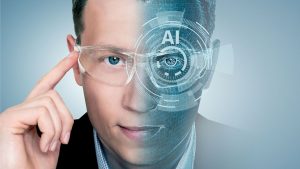
Image by: Yandex.com
By 2025, AI applications will blend seamlessly into daily tasks. Voice assistants will handle chores—ordering groceries or booking appointments. Smart displays will show your daily schedule and weather. AI will help manage energy in your house. Beyond simple commands, AI will learn your habits and suggest ways to save time and money.
AI chatbots will guide you through customer service calls or tech support. Simple questions will be answered instantly. AI will even help you pick movies or plan trips based on your past choices.
The future of AI in everyday life is about making tech feel natural. The goal is to reduce stress and free you to focus on what you love.
How AI Will Enhance Home Life
Your home will become smarter in 2025. Smart home AI devices will adjust lights, heat, and music to match your mood. Imagine coming home to soft music and warm lights after a long day.
Refrigerators will track what you eat. They’ll suggest recipes and add missing items to your shopping list. Robotic vacuum cleaners will map your rooms and clean on a schedule without you lifting a finger.
Security cameras with AI applications will spot visitors, pets, or even packages on your porch. They’ll send alerts only when needed, cutting down false alarms.
Voice assistants will also read bedtime stories to kids or set reminders for medicine. Home life will feel more like a team effort between you and your smart devices.
How AI Will Transform Healthcare

Image by: Yandex.com
In healthcare, AI in 2025 will help doctors and patients alike. Wearable devices will track vital signs like heart rate, oxygen levels, and sleep patterns. AI will analyze this data in real time and warn you or your doctor of potential issues.
Virtual health assistants will guide you through simple medical tests at home. They’ll remind you to take medication and schedule doctor visits. AI algorithms will scan X-rays and MRIs faster, helping doctors detect problems sooner.
In hospitals, robots will deliver supplies, freeing staff to focus on patient care. AI will optimize staff schedules and predict patient needs, making healthcare smoother and more personal.
With AI in healthcare, patients gain more control over their health, and doctors gain powerful tools to do their work better.
How AI Will Change Education

Image by: Yandex.com
Classrooms in 2025 will be more personal with AI technology in daily life. Smart tutors will adapt lessons to each student’s skill level. If a student struggles in math, the tutor will offer extra practice and clear explanations.
Teachers will use AI to grade tests and spot where the class needs more help. This cuts grading time, giving teachers more chances to engage with students.
Virtual reality powered by AI will take students on field trips to ancient Rome or inside a human cell. Learning will feel like an adventure.
For adults, AI will power lifelong learning. Apps will suggest short courses or articles based on your job or hobbies. Learning a new language or skill will fit into any schedule, making education truly flexible.
1. Personalized Learning
AI will help create personalized learning paths for students based on their strengths, weaknesses, and learning styles. For example, adaptive learning platforms will use AI to track a student’s progress and adjust the content and difficulty level in real-time. This ensures that each student gets the support they need to succeed.
2. AI Tutoring Systems
AI-powered tutoring systems will be available to help students with their homework, assignments, and studying. These systems will provide instant feedback, help students understand complex concepts, and offer personalized support. With the rise of online learning, AI will be an invaluable tool in supporting students across the globe.
3. Automating Administrative Tasks
AI will also help reduce the workload of teachers and administrators by automating tasks such as grading, scheduling, and student assessments. This will give educators more time to focus on teaching and supporting students directly.
How AI Will Improve Work and Productivity

Image by: Yandex.com
At work, AI applications will handle routine tasks. Chatbots will draft emails and schedule meetings. AI tools will summarize long documents and highlight key points.
Teams will use AI for real-time translation in video calls, breaking language barriers. AI will also analyze data faster, helping businesses spot trends and make smarter decisions.
For individual workers, AI-powered note-taking apps will record and transcribe meetings. AI co-workers will suggest project ideas or flag errors in code or reports.
This shift lets people focus on creative work and strategic thinking. With AI in everyday life, productivity goes up while stress goes down.
1. AI-Powered Project Management Tools
AI-powered project management tools will help teams collaborate better and stay on top of their tasks. These tools will use machine learning to analyze project data and predict potential risks or delays. They will also suggest the best course of action and help allocate resources more effectively.
2. Automating Repetitive Tasks
AI will automate many of the repetitive tasks that take up valuable time, such as data entry, scheduling meetings, and responding to basic customer inquiries. This will allow employees to focus on more creative and strategic work, ultimately boosting productivity and job satisfaction.
3. Enhancing Communication with AI Chatbots
AI-powered chatbots will continue to improve communication within companies by automating customer service and internal communication. These chatbots can quickly answer questions, provide information, and help employees stay connected and informed. They can even assist in decision-making by analyzing vast amounts of data in real-time.
How AI Will Impact Transportation and Mobility
In 2025, AI trends 2025 in transportation will reshape how we move. Self-driving cars will handle long highway stretches, letting you relax or catch up on work.
Public transit systems will use AI to predict crowding and adjust schedules. You’ll get alerts on your phone for the fastest routes, switching between buses, trains, and bikes.
Smart traffic lights will sense traffic jams and change signals to clear main roads first. Delivery robots and drones will drop off packages to your door without delays.
These advances mean fewer accidents, shorter commutes, and a cleaner environment. AI in transportation puts the future of mobility into our hands today.
Table: AI Applications Across Daily Life
| Area | AI Feature | Everyday Benefit |
|---|---|---|
| Home | Smart Displays, Automated HVAC | Comfort at home, energy savings |
| Healthcare | Wearables, Diagnostic AI | Early warning, easier monitoring |
| Education | Adaptive Tutors, VR Learning | Personalized lessons, engaging trips |
| Work | Automated Scheduling, Chatbots | More creative time, less busy work |
| Transportation | Self-Driving, Smart Signals | Safer, faster, greener travel |
Tips to Thrive with AI in Daily Life
To make the most of AI in everyday life in 2025, follow these tips. First, pick one AI tool at a time to avoid overload. Learn its features well before adding more.
Second, protect your data. Use strong passwords and two-factor authentication for AI apps. Read privacy settings and limit data sharing when possible.
Third, keep a balance. AI can entertain and inform, but unplug regularly. Spend time offline with family, nature, or hobbies.
Finally, stay curious. AI evolves fast. Follow tech news or online forums to learn about new AI gadgets and apps that can help you.
What AI Tools Will Power 2025?
In addition to broad applications, specific AI tools will become household names. From personal assistants to specialized apps, these tools bring AI into your pockets and onto your desktops:
| AI Tool Category | Example Tool | Key Use Case |
|---|---|---|
| Voice Assistant | Amazon Alexa | Smart home control, reminders |
| Virtual Health Coach | Vi Trainer | Guided workouts, real-time feedback |
| Writing Assistant | Grammarly AI | Grammar checks, style suggestions |
| Photo Editor | Adobe Sensei | Auto-tagging, smart filters |
| Financial Advisor | Cleo AI | Budget tracking, spending insights |
Each tool fits into your routines, from checking the weather by voice to refining your next report with AI-driven edits.
Conclusion
By 2025, AI in everyday life will be as common as smartphones. From smart home AI to Healthcare, education, work, and transport, AI will ease tasks and enrich experiences. These AI applications will give us more time for creativity, health, and connection. To thrive, start small: choose one AI device, learn its features, and protect your privacy. Stay open to new tools as they appear. With the right approach, AI will become a trusted partner, turning daily routines into smarter, happier moments
Technology
Top 5G Gadgets Revolutionizing Remote Work: Smart Devices
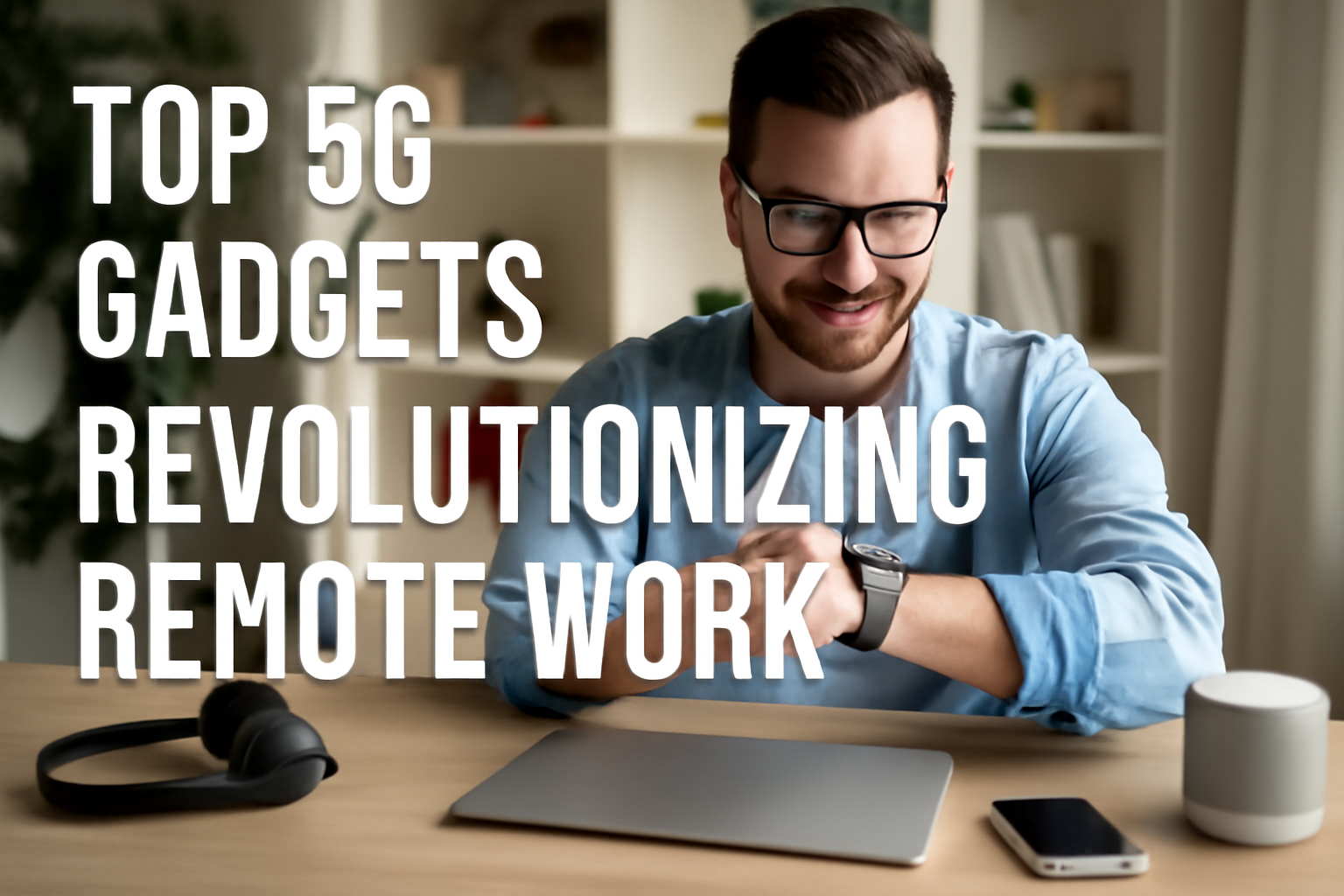
Introduction
In 2025, 5G technology is no longer just a buzzword; it has become a game-changer in how we work, especially in the world of remote work. The ultra-fast speeds, low latency, and high reliability of 5G networks are revolutionizing the way remote workers stay connected, collaborate, and get their tasks done efficiently. From 5G-enabled laptops to smart home office gadgets, these innovations are making remote work more productive and enjoyable than ever before.
In this article, we’ll explore some of the top 5G gadgets that are set to Transform Remote Work in 2025. These devices promise to enhance connectivity, collaboration, and efficiency, making them essential tools for anyone working from home or on the go.
What Is 5G and Why Does It Matter for Remote Work?
5G stands for the fifth generation of wireless technology. It’s much faster than the 4G networks most people used just a few years ago. But speed isn’t the only benefit. 5G also allows more devices to connect at the same time, without slowing down. It reduces delays, also known as latency, which means you can do things like video calls, file transfers, or cloud editing with no lag.
This is especially important for remote work. In the past, a slow internet connection could cause big problems. Video calls would freeze, files wouldn’t upload, and apps would crash. With 5G, those problems happen less often. You can work from places with weak Wi-Fi, and your devices will still run smoothly. That’s why 5G gadgets for remote workers are becoming a must-have in 2025.
Another reason 5G matters is that it supports smarter tools. Devices can now talk to each other more easily, thanks to faster, real-time communication. Whether you’re working from a hotel, a coffee shop, or a van in the mountains, 5G helps your devices stay connected and up to date. This means fewer interruptions, better performance, and more freedom to work your way.
In short, 5G matters because it brings speed, power, and flexibility to remote work. It helps you stay connected, productive, and prepared for anything your workday throws at you. That’s why having the right 5G-compatible devices is key to thriving in today’s work-from-anywhere world.
1. 5G Laptops for Ultra-Fast Productivity

Image by: Yandex.com
One of the most impactful 5G gadgets in the remote work world is the 5G-enabled laptop. These laptops come with built-in 5G connectivity, meaning you no longer need to rely on Wi-Fi networks or hotspots to stay connected.
Why it’s revolutionary: With a 5G laptop, remote workers can connect to the internet quickly, no matter where they are. Whether you’re working from a coffee shop, co-working space, or even a park, you can access high-speed internet without relying on unreliable public Wi-Fi.
Top Picks for 2025:
- HP Spectre x360 5G: A powerful, sleek laptop with 5G capabilities for seamless remote work.
- Samsung Galaxy Book Pro 5G: Combines fast connectivity with a thin, lightweight design perfect for professionals on the move.
Tip: When choosing a 5G laptop, look for one that supports both 5G sub-6 GHz and mmWave to ensure you’re getting the fastest speeds possible.
2. 5G Mobile Hotspots: Reliable Internet Anywhere

Image by: Yandex.com
For remote workers who are always on the go, 5G mobile hotspots are a must-have gadget. These portable devices allow you to create your own high-speed internet connection wherever you are, so you’re not dependent on local networks.
Why it’s essential: A 5G mobile hotspot ensures you always have a reliable connection, even in areas with limited or slow internet options. Whether you’re traveling or working in remote locations, a mobile hotspot keeps you connected to your team and projects.
Top Picks for 2025:
- Netgear Nighthawk M5: A 5G mobile hotspot that supports Wi-Fi 6 and offers ultra-fast speeds for multiple devices.
- Verizon Jetpack 8800L: A user-friendly device that provides 5G speeds with excellent coverage.
Tip: When using a 5G mobile hotspot, choose a device with long battery life and the ability to connect multiple devices at once to stay productive on the go.
3. 5G Smart Home Devices for a Seamless Office Setup
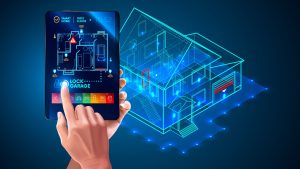
Image by: Yandex.com
5G-enabled smart devices provide faster communication between your office gadgets, enhancing both your home network and work environment.
Why it’s useful: With 5G-enabled smart devices, everything in your home office can work together seamlessly. From controlling lighting and temperature to managing security systems, 5G ensures that your smart devices respond in real-time without delay, making your workspace more efficient.
Top Picks for 2025:
- Google Nest Hub Max: A smart display that integrates with your 5G network to control home devices and manage your calendar or meetings.
- Ring Video Doorbell Pro 2: A 5G-compatible doorbell that offers real-time video streaming with low latency.
Tip: Integrate 5G smart devices with virtual assistants like Google Assistant or Alexa to control your home office with simple voice commands, saving you time and effort.
4. 5G Virtual Reality (VR) Headsets for Remote Collaboration
In 2025, 5G-powered virtual reality (VR) headsets will change the way remote teams collaborate. With ultra-fast internet speeds, VR meetings and virtual workspaces will become more immersive and realistic, allowing team members to interact as if they were in the same room.
Why it’s transformative: VR headsets powered by 5G will enable a new form of remote collaboration, where people can interact in virtual environments, share screens, and conduct meetings.
Top Picks for 2025:
- Oculus Quest 2: A popular, affordable VR headset with 5G capabilities, ideal for remote collaboration.
- HTC Vive Pro 2: A high-end VR headset offering immersive workspaces and enhanced virtual meetings.
Tip: Incorporating VR into remote work can improve team bonding and productivity. Consider using VR platforms for team meetings, brainstorming sessions, and presentations.
5. 5G-enabled Smartwatches for Stay-Connected Professionals
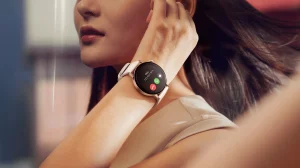
Image by: Yandex.com
In 2025, smartwatches with 5G connectivity will help remote workers stay connected and organized without being tethered to a computer. These wearables are perfect for managing tasks, checking emails, and staying on top of deadlines.
Why it’s important: 5G-enabled smartwatches offer lightning-fast notifications, instant access to work apps, and the ability to track health metrics—all from your wrist. With 5G, these devices become more efficient, helping remote workers stay on top of their work without interruption.
Top Picks for 2025:
- Apple Watch Series 8 5G: A stylish and feature-rich smartwatch that offers 5G connectivity, fitness tracking, and notifications on the go.
- Samsung Galaxy Watch 5G: A rugged, 5G-enabled smartwatch that supports work communication and fitness tracking.
Tip: A 5G smartwatch is a great productivity tool that can help you keep track of your schedule, get reminders, and even attend meetings without needing your phone or computer.
6. Tablets With 5G: Creative and Productive On the Go
5G-enabled tablets are perfect for workers who need something lighter than a laptop but more powerful than a phone. Tablets like the iPad Pro 2025 and Samsung Galaxy Tab S9 support 5G networks and offer great performance for creative tasks, note-taking, and video calls.
You can attach a keyboard and turn your tablet into a mini-laptop. Many tablets also support stylus pens, making them ideal for artists, writers, and designers. With 5G, everything syncs quickly, and you can download or upload files in seconds.
7. Wearables With 5G: Smart Devices That Keep You On Track

Image by: Yandex.com
5G wearables, such as smartwatches and smart glasses, help remote workers manage their time, health, and communication. The Apple Watch Series 9 and Meta Ray-Ban smart glasses are top examples. These devices can receive calls, show reminders, send texts, and even track your health.
5G wearables connect faster and more smoothly, so you can stay updated even when you’re away from your phone or laptop. They’re great for setting timers, managing meetings, and checking tasks without breaking your focus.
8. 5G Accessories for Better Sound and Video Quality
Great sound and video are important for remote work. That’s why 5G-enabled accessories, such as wireless earbuds and 4K webcams, are becoming popular. Tools like AirPods Pro, Logitech Brio 4K, and Sony LinkBuds offer fast, clear connections for video calls and meetings.
Because 5G reduces lag and improves sync, these accessories work better than ever. You won’t have to worry about echoes, frozen video, or dropped calls. This makes your meetings more professional and your workday less stressful.
How to Choose the Right 5G Tech for Your Workflow
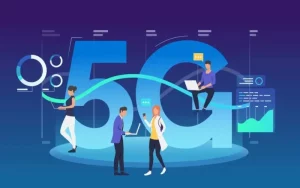
Image by: Yandex.com
Choosing the best 5G technology for remote work depends on your specific needs. Some people work mainly on emails and video calls. Others might need tools for graphic design, coding, or editing large videos. Start by thinking about how you spend your workday. If you attend a lot of online meetings, a 5G laptop and smartphone with a strong camera and mic are a great fit. If you travel often, a portable router and tablet might be more helpful.
Since you’ll often be working away from your desk, your gadgets should last all day without charging. Look for devices that are lightweight and easy to carry. Size and weight matter when you’re always on the move.
Make sure your devices can connect easily. A good setup includes gadgets that work well together. For example, your phone should sync with your laptop and calendar, while your tablet should connect to your cloud storage. This keeps your workflow smooth and organized.
Price is also something to think about. You don’t need the most expensive gadget to succeed. Many mid-range 5G tools offer excellent performance. Compare features before you buy, and choose what brings the most value to your work.
Lastly, consider security features. Choose gadgets that support secure connections, data encryption, and automatic updates. This keeps your work safe and gives you peace of mind while working remotely.
How Does 5G Improve Remote Collaboration?
5G brings real-time performance to apps and tools you use every day. Here’s how:
Seamless Video Calls: Platforms like Zoom and Teams run without pixelation or audio dropouts, thanks to low latency.
Instant File Sharing: Large design files, code repositories, or video edits upload in seconds.
Cloud Apps in Real Time: Online whiteboards and collaborative docs update live, so everyone sees changes immediately.
AR/VR Collaboration: With instant data flow, you can hold virtual meetings in 3D spaces, mark up models, and brainstorm together.
Overall, the impact of 5G on remote work is clear: fewer delays, more focus, and better teamwork.
Table: Best 5G Gadgets for Different Remote Roles
| Remote Role | Must-Have Gadget | Why It’s Useful |
|---|---|---|
| Freelancer | 5G Laptop + Smartphone | Mobility, quick uploads |
| Digital Nomad | 5G Wi-Fi Router + Tablet | Travel-friendly, compact |
| Designer/Artist | 5G Tablet + Stylus | Drawing, design, creative apps |
| Business Executive | 5G Smartphone + Smartwatch | Scheduling, communication, calls |
| Virtual Assistant | 5G Laptop + Webcam + Headset | Clear meetings, task handling |
Tips to Choose the Right 5G Gadget
- Identify Your Needs
- Do you need office-wide Wi-Fi or a personal hotspot? Pick a 5G router for many devices or a 5G hotspot for solo use.
- Check Network Coverage
- Not all areas have strong 5G. Use a carrier’s coverage map before buying any 5G device.
- Compare Speeds and Latency
- Look at real-world tests, not just peak speeds. Lower latency matters most for video calls.
- Consider Battery Life
- For 5G hotspots, aim for at least 10 hours of battery life to get through a workday.
- Secure Your Network
- Always use strong passwords and enable built-in VPNs or firewalls on your home office technology.
Conclusion
The top 5G gadgets for 2025, such as 5G laptops, mobile hotspots, Smart Home Devices, VR headsets, and smartwatches, are transforming how we work from home. With faster speeds, improved connectivity, and more powerful devices, these 5G tools will help you work smarter and more efficiently.
By integrating these 5G gadgets into your remote work setup, you can stay connected, collaborate effortlessly, and optimize your productivity in the fast-paced digital world of 2025.
Technology
Understanding Quantum Computing: What It Means for You

Introduction
Quantum computing is a term you might have heard a lot lately. But what does it really mean? And how will it change your life in the future? Unlike regular computers that use 1s and 0s to process information, quantum physics work in a whole new way. They could change important industries like medicine, finance, and security, making things that seemed impossible possible.
In this article, we’ll explain what quantum physics is, how it works, and why it’s important for you. You’ll get a better idea of how this cool new technology could change the world.
What is Quantum Computing?

Image by: Yandex.com
Quantum computing is a kind of computer that uses the rules of quantum mechanics (a branch of science) to do its job. While regular computers use bits to show information as either 0 or 1, quantum physics use quantum bits or qubits. These qubits can be both 0 and 1 at the same time, which is called superposition.
This allows quantum physics to solve some problems much faster than regular computers. For example, they could help with things like encryption, solving complex puzzles, and simulating molecules in science, which regular computers can’t do very well.
How Do Quantum Computers Work?

Image by: Yandex.com
Quantum computers use two key ideas from quantum mechanics: superposition and entanglement.
- Superposition: Traditional computers use bits that are either 0 or 1, but qubits can be both 0 and 1 at the same time. This lets quantum physics look at many answers at once, making them way faster for certain tasks.
- Entanglement: This is when two qubits are linked together. If something happens to one qubit, the other will be affected, no matter how far apart they are. This helps quantum physics solve problems much quicker than regular ones.
Thanks to these ideas, quantum physics could do calculations that would take regular computers millions of years, but in just a few seconds!
The Benefits of Quantum Computing: Why It Matters
Quantum computing offers many exciting benefits. One of the biggest advantages is its ability to solve problems that are too complex for traditional computers. For example, quantum physics can simulate molecules for drug discovery, solve optimization problems in business, and even improve artificial intelligence. They have the potential to speed up tasks that take classical computers a long time to process. This could lead to breakthroughs in medicine, security, and technology, creating a future where complex problems can be solved faster and more efficiently.
The Role of Quantum Computing in Modern Technology

Image by: Yandex.com
The role of quantum computing in today’s world is still growing, but it is already clear that it will play a huge part in the future of technology. Quantum computers can help us understand and solve problems in ways that classical computers cannot. In areas like cryptography, for instance, quantum physics can help create new, more secure ways of protecting data. In the field of medicine, quantum physics could speed up the process of discovering new drugs by simulating complex biological systems. As more companies and researchers work on developing quantum physics, its role in shaping technology will only continue to grow.
The Economic Impact of Quantum Computing

Image by: Yandex.com
Quantum computing is expected to have a big impact on the economy. As quantum computers become more advanced, they could help businesses solve problems and make decisions much more quickly. For example, companies could use quantum physics to improve supply chains, reduce costs, and predict future trends. Industries like finance could benefit from quantum physics by analyzing stock market trends and making better investment decisions. As more industries adopt quantum technology, it could lead to job growth and new business opportunities in fields like quantum programming and quantum hardware development.
Why Quantum Computing Matters for You

Image by: Yandex.com
Quantum computing might sound like something from the future, but it’s already starting to change industries. By 2025, it will affect how we live and work. Here’s how:
1. Revolutionizing Medicine
Quantum computers could help doctors find new medicines faster by simulating how molecules work. This would make drug discovery quicker and could lead to more personalized treatments for everyone.
2. Advancing Financial Systems
Quantum computers can help banks solve complex problems faster. They could improve investment strategies and help prevent fraud. This means smarter money management and safer financial systems.
3. Improving Cybersecurity
In cybersecurity, quantum physics could break current security systems, which sounds scary! But this also means they can help create new and stronger ways to protect our personal data. Quantum encryption will make our information safer from hackers.
4. Boosting Artificial Intelligence (AI)
Quantum computers could make AI smarter. They would help AI systems learn faster and make better predictions. This means that in the future, AI could help with everything from health care to entertainment in ways we can’t imagine yet.
How Quantum Computing Will Impact Everyday Life

Image by: Yandex.com
Even though quantum computing isn’t fully here yet, it will start changing things soon. Here’s how it could affect your life:
1. Faster and More Efficient Services
As quantum computing improves, services like banking, shopping, and healthcare will get faster. For example, AI-powered customer service could help you solve problems quicker. In healthcare, quantum computers could speed up tests and diagnoses, making treatment faster.
2. Smarter Devices
Soon, your gadgets like smartphones or smart home assistants will be even smarter thanks to quantum computers. These devices could work faster and predict what you need, making everyday tasks easier.
3. Personalized Experiences
Quantum computers will make it easier to personalize your online experiences. Shopping sites might give you better recommendations, and streaming services like Netflix or Spotify could suggest content based on what you like.
Quantum Computing and Privacy

Image by: Yandex.com
While quantum physics offers many advantages, it also raises concerns, especially around privacy and data security. Today, we rely on encryption methods to protect our personal information, like passwords and credit card numbers. However, quantum physics could break many of the encryption systems we use today. This means new forms of encryption will need to be developed to protect our data in a quantum-enabled world. Scientists are already working on quantum encryption techniques that could keep our information safe, even from the power of quantum computers.
The Challenges of Quantum Computing: What’s Holding Us Back?
While the potential of quantum computing is huge, there are still many challenges to overcome. One of the biggest challenges is quantum decoherence, where qubits lose their quantum state due to interference from their surroundings. This makes it difficult to maintain the stability of quantum computers. Another issue is the difficulty of building large, scalable quantum computers that can handle more complex problems. Despite these challenges, researchers are making progress, and many believe that quantum computing will eventually become a key technology in the future.
The Future of Quantum Computing: What’s Next?

Image by: Yandex.com
The future of quantum computing looks bright. As technology improves, quantum computers will become more powerful and accessible. This could lead to major advancements in many fields, from medicine to artificial intelligence. Quantum computers could solve problems in minutes that would take traditional computers years to complete. In the future, we may see quantum computing being used in everyday applications, helping us to solve problems faster and more efficiently. While we are still in the early stages of development, the future of quantum computing is full of exciting possibilities.
Comparative Table: Key Areas Quantum Computing Will Impact in 2025
| Area | Impact of Quantum Computing | How It Will Affect You |
|---|---|---|
| Medicine | Accelerates drug discovery and personalized treatments | Faster, better treatments for health problems |
| Finance | Optimizes investment strategies and risk analysis | Smarter financial decisions, safer investments |
| Cybersecurity | Develops quantum encryption and enhances security | Stronger protection for your personal and financial data |
| Artificial Intelligence | Powers faster AI learning and improves predictions | Smarter AI tools for personalized experiences and services |
Conclusion
Quantum computing is going to change a lot of things, from how we solve problems to how we interact with technology. By 2025, it will help improve fields like medicine, finance, cybersecurity, and AI. While it may take some time for quantum computers to become mainstream, learning about them now will help you understand how they’ll shape the future.
Quantum computing will help us solve problems that seemed impossible and make our world smarter and more efficient. Keep an eye on this technology, because it’s going to change the world in ways we can’t yet fully imagine!
Call to Action
Want to learn more about how quantum computing could affect you? Stay up-to-date with the latest technology news and discover more on our website!
-
Business2 years ago
Cybersecurity Consulting Company SequelNet Provides Critical IT Support Services to Medical Billing Firm, Medical Optimum
-
Business2 years ago
Team Communication Software Transforms Operations at Finance Innovate
-
Business2 years ago
Project Management Tool Transforms Long Island Business
-
Business2 years ago
How Alleviate Poverty Utilized IPPBX’s All-in-One Solution to Transform Lives in New York City
-
health2 years ago
Breast Cancer: The Imperative Role of Mammograms in Screening and Early Detection
-
Sports2 years ago
Unstoppable Collaboration: D.C.’s Citi Open and Silicon Valley Classic Unite to Propel Women’s Tennis to New Heights
-
Art /Entertainment2 years ago
Embracing Renewal: Sizdabedar Celebrations Unite Iranians in New York’s Eisenhower Park
-
Finance2 years ago
The Benefits of Starting a Side Hustle for Financial Freedom































